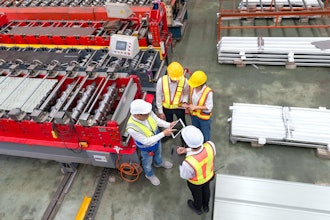
On July 1, 2020, the long awaited United States – Mexico – Canada Agreement (USMCA) went into effect, replacing the North American Free Trade Agreement (NAFTA). While many of the obligations imposed by NAFTA remain in place, new differences have emerged under USMCA that will require attention from the private sector looking to conduct transnational business within North America.
USMCA parred back rules of origin regulations for certain goods (e.g., chemicals), but also increased restrictions on others (e.g., automotive and steel). In particular, the automotive sector faces a complex set of new requirements. Among the more notable additions, this article will provide an overview regarding the first of its kind Labor Value Content (LVC) rule imposed by the USMCA.
Other notable changes under the USMA include changes to the allowable percentage of regional steel and aluminum, modification of the de minimus percentage for non-originating materials, and the addition of “recovered materials” and “remanufactured goods” as a product classification. Companies also must contend with modifications to the requirements of the certificates of origin for covered products, the IP protections granted traditionally provided under NAFTA, the Investor State Dispute Settlement provisions. The USMCA also imposes a prohibition on duties for electronically transmitted products, among other various modifications.
Application and Purpose of LVC Under the USCMA
The LVC requirements under the USMCA impose certain minimum wage thresholds, beginning at 30 percent on July 1, 2020, and gradually increasing to 40 percent by July 1, 2023. The stated goal of these requirements is to drive higher wages in the USMCA zone.[1] The LVC requirement applies exclusively at the automotive manufacturing (“OE”) level.
Under the USMCA[2], a passenger vehicle, light truck, or heavy truck only qualifies as originating under the Rules of Origin of the USMCA as set forth in Chapter 4, if the vehicle “producer certifies that its production meets [the] Labor Value Content (LVC) requirement[s] set forth in Article 7(1)-(2) of the USMCA, with the LVC calculated in accordance with the formulas set forth in Article 7(3) of the USMCA.”
Automotive component suppliers are not strictly obligated to comply with the LVC requirement for their goods to be USMCA-originating, as long as they fulfill the relevant Rule of Origin for their particular products. However suppliers may elect (or may be required by their customers) to comply with LVC requirements and thus “contribute” to the LVC percentages that the OEs are mandated to follow. Thus, it is important for suppliers to be aware of the LVC requirements and the manner in which LVC is required to be calculated under the USMCA.
How to Calculate LVC Under the USCMA
The USMCA and its Uniform Regulations[3] (the “Regulations”) set forth a series of detailed definitions and formulas to calculate the LVC. Under Section 18 of the Regulations, the LVC for a passenger vehicle, light truck or heavy truck is calculated as a total of amounts for the following inputs:
- “high-wage materials” used in production
- “high-wage labor costs” incurred in the assembly of the vehicle
- “high-wage transportation or related costs for shipping” materials to the location of the vehicle producer, if not included in the amount for high-wage materials
- a credit for “high wage technology expenditures”;
- a credit for “high-wage assembly expenditures.”
While the formula provided under the USMCA may sound simple in concept, like many things, the proverbial devil is in the details. In this case, the details, consisting of a series of additional rules and formulas for how each of the individual components listed above, are set forth in the Regulations. Specifically, Part VI (Automotive Goods), Section 12 (Definitions and Interpretation) of the Regulations provides the following definitions:
- high-wage material (HWM) means a material that is produced in a qualifying wage-rate production plant
- high-wage labor costs (HWLC) means the sum of wage expenditures, not including benefits, for workers who perform direct production work at a qualifying wage-rate vehicle assembly plant
- high-wage transportation or related costs for shipping means costs incurred by a producer for transportation, logistics, or material handling associated with the movement of high-wage parts or materials within the territories of the USMCA countries, provided that the transportation, logistics, or material handling provider pays an average base hourly wage rate to direct production employees performing these services of at least:
- $16 in the United States
- $20.88 in Canada
- $294.22 in Mexico
High-wage transportation or related costs for shipping may be included in high wage material and manufacturing expenses if those costs are not otherwise included.
- high-wage technology expenditures means wage expenditures – expressed as a percentage of a passenger vehicle, light truck, or heavy truck producer’s total production wage expenditures – at a corporate level in the territory of one or more of the USMCA countries on:
- research and development, including prototype development, design, engineering, or testing operations and any work undertaken by a producer for the purpose of creating new, or improving existing, materials, parts, vehicles or processes, including incremental improvements thereto, and information technology, including software development, technology integration, vehicle communications, or information technology support operations.
- Expenditures on capital or other non-wage costs for R&D or IT are not included. For greater certainty, there is no minimum wage rate associated with high-wage technology expenditures.
In order to fully understand the definitions for these input factors, it is necessary to reference a variety of further definitions and formulas contained within Sections 12 and 18 of the Regulations. Most notably:
- The amount that may be included for high-wage materials used in production is the net cost or the annual purchase value (the “APV”) of materials that undergo production in a “qualifying-wage-rate production plant” and that are used in the production of passenger vehicles, light trucks or heavy trucks in a plant located in the territory of a USMCA country. (Section 18.(4)).[4]
- A “qualifying-wage-rate production plant” means a plant that produces materials for passenger vehicles, light trucks or heavy trucks located in a USMCA country, at which the average base hourly wage rate is at least US$16 in the United States (with different values in local currency for Canada and Mexico). (Relevant definition in Section 12).
- A “qualifying-wage-rate production plant” may be certified based on the average wage paid to direct production workers at the plant for July 1 to December 31, 2020, or for July 1 to June 30, 2021. In subsequent periods, the certification of a qualifying-wage-rate production plant based on a period less than 12 months is valid for the following period of the same length; the certification of a qualifying-wage-rate production plant based on a 12- month period is valid for the following 12 months. (Section 18.(5)).
Though the definition of “high-wage labor costs (HWLC)” refers to qualifying wage rates at vehicle assembly plants, we believe that such definition may reasonably be interpreted to mean the sum of wage expenditures, not including benefits. (Relevant definition in Section 12).
The amount that may be included for high-wage transportation or related costs for shipping are the costs incurred by the OE for transportation, logistics, or material handling associated with the movement of high-wage parts or materials within the territories of the USMCA countries, provided that the transportation, logistics, or material handling provider pays an average base hourly wage rate to direct production employees performing these services of at least US$16 in the United States (with different values in local currency for Canada and Mexico). (Relevant definition in Section 12).
Conclusion
The USMCA provides automotive manufacturers and their suppliers with a multitude of new opportunities and challenges. The new requirements imposing obligations for LVC represent a critical new issue with which suppliers and their customers must contend. Understanding and applying these rules to a supplier’s particular situation require time and careful thought. However, these rules present new avenues for suppliers to provide value to their OE customers seeking to ensure that they meet the minimum LVC requirements necessary for favorable treatment under the USMCA.
Ann Marie Uetz is a partner and trial attorney with Foley & Lardner LLP, where she represents upper and middle market businesses in their contracts and business disputes. Ann Marie focuses on the manufacturing industry – chiefly suppliers in the automotive and defense industries – and advises her clients on acquisitions, procurement and supply contracts, and disputes that arise within the supply chain.
[1] https://ustr.gov/trade-agreements/free-trade-agreements/united-states-mexico-canada-agreement/fact-sheets/modernizing
[2] More specifically, Article 7 of Appendix 1 of Annex 4-B of Chapter 4 of the USMCA.
[3] https://ustr.gov/sites/default/files/files/agreements/FTA/USMCA/Text/UniformRegulationsRulesofOrigin.pdf
[4] Please note that other suppliers may also “contribute” to the fulfillment of the OE´s LVC requirement, see Section 18.(7).























